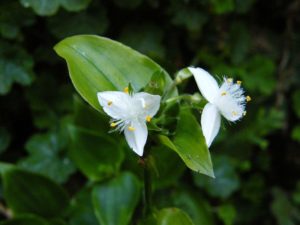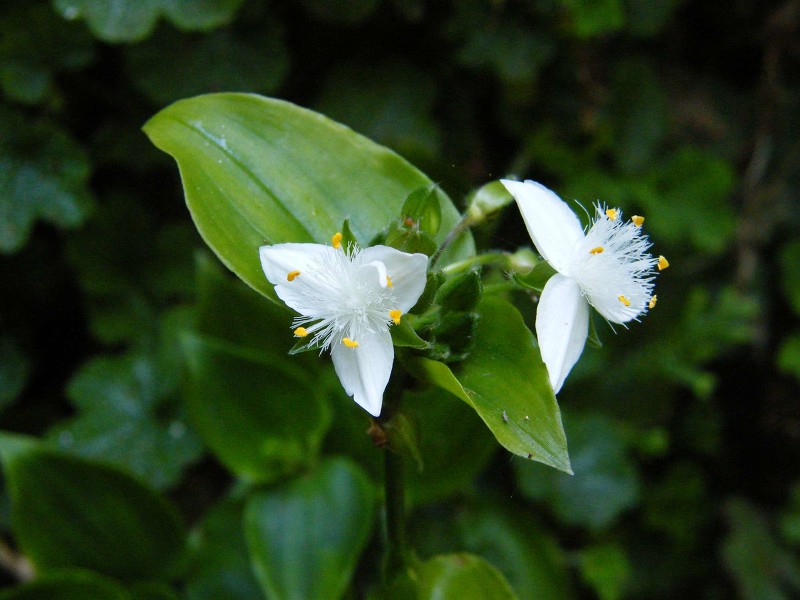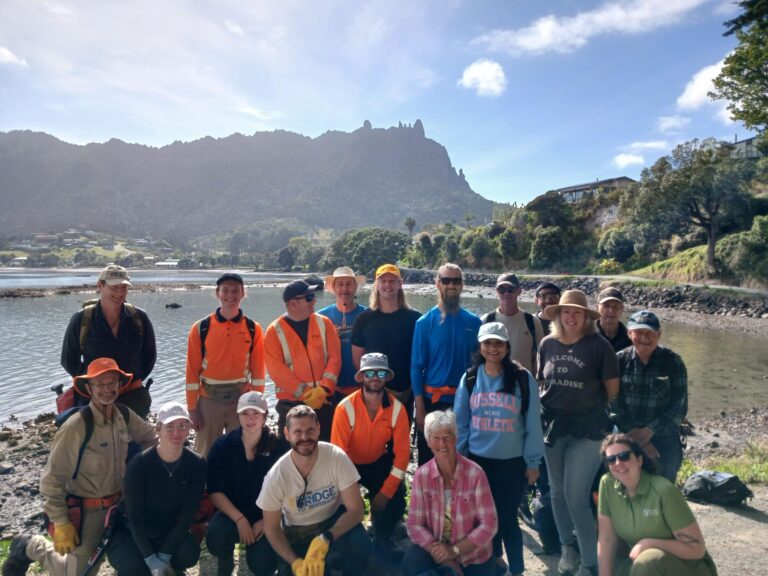 Tradescantia fluminensis
Tradescantia fluminensis
Just want to know how to kill it?
Skip to control methods
Also known as
Wandering willie
What does it look like?
Creeping and mat-forming perennial groundcover with succulent, soft, creeping stems that root at all nodes touching the ground. Dark green, shiny, smooth and slightly fleshy leaves (3-6 cm long ) are oval with pointed tips. White flowers (2 cm diameter) produced from December to January are 3-petalled and in small clusters. No fruit or seed is produced in New Zealand. Variegated and purple-backed leaf cultivars are common and revert readily to the green form.
Why is it a problem
Tolerant of light to deep shade and consequently able to invade even intact forest and form dense mats on the forest floor, smothering vegetation and preventing native regeneration. Very tolerant of severe damage and grazing, wet, most soil types and high to low temperature, but intolerant of frost and drought. Readily establishes from even tiny fragments so is easily spread by people and animals.
Causes habitats to open and be invaded by exotic shrubs and vines. Mats growing on riverbanks can break away with water flow and contribute to flooding.
It may cause dermatitis in dogs.
How does it spread?
Does not set seed but stem fragments are spread by water movement, livestock, dumped vegetation, soil movement, boots and mowers. Often found in gardens, waste places, and as a contaminant in nursery plants.
How much of it do we have on the Whangarei Heads Peninsula?
Localised infestations. Most of these are on private land but some some occur at the margins of significant bush areas,
What can we DO about it at Whangarei Heads?
Lots! Because it doesn’t set seed, with good follow up we can eliminate it at sites where it threatens bush areas, and we can prevent the establishment of new sites through good weed hygiene practices.
Control requires committed follow up and larger areas should be tackled strategically, rolling the edge of the infestation back from the top and sides of the infestation area.
Check out the control methods below:
How do I control it?
Special disposal notes: Spread by stem fragments. Even tiny fragments will re-sprout. Dispose of very carefully and maintain strict weed hygiene. Sets no seed, so can be eradicated (in areas not prone to flooding) with committed follow up.
- Fence the chooks onto the patch.
- For areas where control not feasible, request some biocontrol agents.
- Weedmat for 6-9 months ensuring edges of mat are tucked under the soil.
- Rake or hand pull small areas during a dry period, working towards centre of infestation. Dry out above ground or cover with black plastic for 6-9mths on site. Major disposal problem, dropped fragments spread infestation.
- Weed wipe (250ml triclopyr/1L water). Follow up any treatment within 2-3 months once new leaves have developed and matured but before plant recovers too much vigour. Check and/or treat until no more found for total control. Multiple treatments required to eradicate.
- Spray larger areas with (60ml triclopyr + 10ml penetrant/10L water). If spraying near near waterway, use (300ml glyphosate + 30ml penetrant/10L water).
Should give 90+% kill. Follow up as above.
Exclude livestock at all times (to prevent spread). Work down catchment from top & sides. All remaining stem fragments resprout. Maintain strict regime to prevent spread or reinfestation from fragments & regrowth; don’t replant until site is clear.
CAUTION: when using any herbicide or pesticide PLEASE READ THE LABEL THOROUGHLY to ensure that all instructions and safety requirements are followed.
Click here for more information on the herbicides referenced in the control methods, or here for more information on the suggested techniques.
Save


